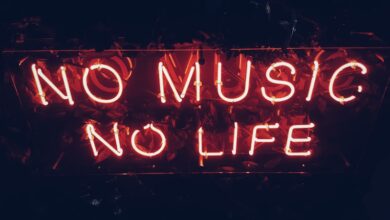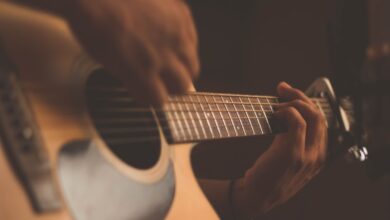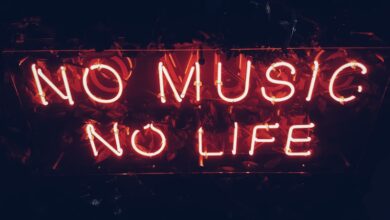Tips for Building a Diverse and Inclusive Music Community

Are you passionate about music and want to create a thriving and inclusive community? Building a diverse and inclusive music community is crucial for fostering creativity, promoting equality, and celebrating the unique talents of individuals from all backgrounds. In this article, we will explore some valuable tips that can help you in this endeavor.
Firstly, it’s essential to embrace diversity in your music community. Encourage musicians from different cultures, ethnicities, genders, and orientations to participate. By providing a welcoming platform for diverse voices, you can create an enriching environment where everyone feels valued and included. Remember, diverse perspectives bring new ideas and fresh sounds to the table, leading to innovation and artistic growth.
Secondly, prioritize inclusivity from the very beginning. Ensure that your community provides equal opportunities for all members to contribute and thrive. Create an open dialogue where everyone’s opinions are respected and valued. Actively seek out and listen to different voices, encouraging collaboration and cooperation among musicians. When everyone feels heard and appreciated, it fosters a sense of belonging and encourages active participation.
Additionally, education plays a vital role in building a diverse and inclusive music community. Offer workshops, seminars, or panel discussions on topics like cultural appropriation, unconscious bias, and the importance of representation. Engage in conversations about social justice issues within the music industry, and work towards eradicating discriminatory practices. By raising awareness and promoting understanding, you can create a more informed and empathetic community.
Moreover, provide mentorship and support programs for underrepresented individuals in the music community. Many aspiring musicians face barriers due to their background or lack of resources. By offering guidance, resources, and networking opportunities, you can help bridge these gaps and empower talented artists to succeed. Encourage established musicians to take on mentoring roles and share their experiences with emerging talents.
Building a diverse and inclusive music community requires intention, effort, and commitment. Embrace diversity, promote inclusivity, educate yourself and others, and provide support to underrepresented individuals. By taking these steps, you can create a vibrant and harmonious music community that celebrates the power of music in all its forms. Let’s come together and make the world of music a more diverse and inclusive place for everyone to thrive.
Harmony in Diversity: 10 Expert Tips for Cultivating an Inclusive Music Community
In the vast realm of music, diversity is not only appreciated but celebrated. An inclusive music community fosters creativity, understanding, and collaboration among musicians from all walks of life. Whether you are a musician, a music lover, or someone involved in the music industry, here are ten expert tips to help you cultivate an inclusive music community.
-
Embrace Different Genres: Break down barriers by exploring various genres of music. Encourage musicians to venture beyond their comfort zones, blending different styles to create unique sounds that transcend cultural boundaries.
Support Emerging Artists: Provide platforms and opportunities for emerging artists, regardless of their background or social status. By showcasing their talent, you contribute to a diverse and vibrant music scene that thrives on fresh perspectives.
-
Promote Cultural Exchange: Organize events that promote cultural exchange, where musicians from different backgrounds can share their traditions and musical heritage. These experiences foster mutual respect and deepen cultural understanding.
-
Accessibility for All: Ensure that your music community is accessible to people with disabilities. Make venues, performances, and resources accommodating and inclusive, enabling everyone to participate and enjoy the magic of music.
-
Mentorship Programs: Establish mentorship programs where experienced musicians guide and inspire aspiring talents. This provides valuable guidance, networking opportunities, and encourages diversity in skill development.
-
Collaborative Projects: Encourage collaborations between musicians from diverse backgrounds. Such projects give rise to new and innovative musical expressions while bridging gaps between cultures.
-
Celebrate Diversity in Programming: When curating music festivals or events, prioritize diversity in programming. Include artists from different ethnicities, genders, and backgrounds, creating a balanced representation of musical talent.
-
Educate and Raise Awareness: Conduct workshops, seminars, and educational programs that raise awareness about inclusivity in the music community. Foster discussions on topics like cultural appropriation, representation, and equal opportunities.
-
Community Engagement: Engage with the local community by organizing music programs in schools, community centers, and public spaces. This allows diverse audiences to experience music firsthand and promotes unity through shared experiences.
-
Establish Codes of Conduct: Implement and enforce codes of conduct that emphasize respect, tolerance, and acceptance within your music community. By setting clear expectations, you create a safe and welcoming environment for all.
Embracing diversity and fostering inclusivity within a music community is an ongoing journey. By following these expert tips, you can contribute to creating a harmonious environment where individuals from all backgrounds can come together, collaborate, and appreciate the universal language of music.
Breaking Down Barriers: How to Foster Diversity and Inclusion in the Music Industry
Introduction:
Are you ready to explore the transformative power of music? In today’s article, we will delve into an important topic that has been gaining momentum in recent years – fostering diversity and inclusion in the music industry. Just like a beautiful symphony composed of different instruments, embracing diversity can harmonize perspectives, enrich creativity, and create a more inclusive and vibrant music community.
Breaking Barriers and Embracing Diversity:
The music industry has long been known for its lack of diversity and inclusivity. However, times are changing, and it’s crucial to break down these barriers. One way to achieve this is by promoting equal opportunities for all individuals, regardless of their background, race, gender, or ethnicity. By actively seeking out and supporting artists from diverse backgrounds, we can celebrate different voices, cultures, and styles, resulting in a rich tapestry of musical expressions.
Inclusive Representation:
Representation matters. It is essential to provide platforms and opportunities for underrepresented groups within the music industry. This includes not only musicians but also professionals behind the scenes, such as producers, sound engineers, and executives. By offering mentorship programs and creating spaces where diverse talents can thrive, we can empower individuals to share their unique stories and experiences through music.
Collaboration and Partnership:
Music has a universal language that knows no boundaries. Encouraging collaboration among artists from diverse backgrounds amplifies the power of music as a unifying force. By forming meaningful partnerships, artists can learn from each other’s perspectives, blend genres and styles, and create something truly extraordinary. Through collaborative efforts, we can challenge stereotypes, bridge gaps, and create a more inclusive musical landscape.
Education and Awareness:
To foster diversity and inclusion, education and awareness play pivotal roles. Schools, music institutions, and industry professionals have a responsibility to promote inclusivity and educate others about the value of diversity. By incorporating diverse voices into music curricula, hosting workshops, and raising awareness about the challenges faced by marginalized communities, we can cultivate a more inclusive generation of musicians and industry leaders.
Conclusion:
As we conclude our exploration of fostering diversity and inclusion in the music industry, remember that every step counts. By breaking down barriers, championing inclusive representation, embracing collaboration, and promoting education and awareness, we can create a music industry that reflects the beautiful diversity of our world. Let us join hands and harmonize together on this transformative journey towards a more inclusive future.
Striking a Chord: Building a Vibrant and Diverse Music Community, One Note at a Time
Music has an extraordinary power to bring people together, transcending boundaries and connecting souls. It has the ability to evoke emotions, express ideas, and ignite a sense of unity like no other art form. In our quest to create a vibrant and diverse music community, we embark on a journey that embraces individuality and celebrates the beauty of harmony.
But how can we build such a community? The answer lies in acknowledging and nurturing the unique voices and talents of musicians from all walks of life. By creating an inclusive space that welcomes diversity, we lay the foundation for a flourishing ecosystem of creativity and collaboration.
Imagine a symphony orchestra where each instrument plays its own distinct part, contributing to the rich tapestry of sound. Similarly, a vibrant music community is one where every genre, style, and cultural tradition finds its rightful place. Jazz, classical, hip-hop, folk, and countless other genres coexist, harmonizing in a celebration of artistic expression.


To achieve this, we must encourage aspiring musicians from diverse backgrounds, ensuring they have access to proper training and resources. By supporting music education programs in schools and communities, we provide opportunities for individuals to explore their musical potential and discover their unique voices. Let us nurture budding talent, empowering them to share their stories and perspectives through music.
In our pursuit of a diverse music community, it is essential to foster a culture of collaboration and exchange. Just as musicians rely on each other’s harmonies, so too should we embrace the power of partnerships. Music festivals, workshops, and collaborative projects become bridges that connect artists, fostering cross-pollination of ideas and styles. Through these interactions, we nurture a vibrant ecosystem that thrives on the blend of different musical traditions and influences.
By building a diverse music community, we create a platform for unheard voices to be amplified, for stories to be told, and for souls to connect. With each note, we enrich the human experience and celebrate our shared humanity. Let us continue to strike a chord that resonates with the hearts and minds of people from all backgrounds, building a musical legacy that will endure for generations to come.
The Sound of Inclusion: 10 Essential Steps for Creating a Welcoming Music Environment
Are you ready to embark on a musical journey that celebrates the sound of inclusion? Creating a welcoming music environment is a harmonious endeavor that requires careful steps to ensure everyone feels embraced and empowered. In this article, we will explore ten essential actions that can transform any music space into a sanctuary of unity and acceptance. So, let’s tune in and discover the power of inclusivity!
-
Embrace Diversity: Celebrate the richness of diversity by welcoming musicians from various backgrounds, cultures, and experiences. Emphasize the importance of different perspectives and encourage collaboration among musicians with diverse talents.
-
Empower Participation: Create an environment where everyone feels encouraged to participate actively. Promote open dialogue, value each individual’s voice, and give opportunities for all to contribute their unique musical gifts.
-
Accessible Spaces: Ensure your music environment is physically accessible to individuals with different abilities. Consider wheelchair accessibility, visual aids, and other accommodations to provide equal opportunities for all musicians to engage fully.
-
Respectful Communication: Foster an atmosphere of respect and kindness by promoting open communication channels. Encourage musicians to express themselves freely, listen actively, and address conflicts or concerns with empathy and understanding.
-
Inclusive Repertoire: Expand your musical repertoire to include compositions from diverse genres, cultures, and eras. Explore music that reflects the vibrant tapestry of our global community and encourages cultural exchange.
Collaborative Learning: Cultivate a culture of learning and growth by fostering collaborative opportunities. Encourage musicians to share their knowledge and skills with one another, creating a supportive network of mentorship and inspiration.
-
Equality in Leadership: Promote diversity in leadership roles within your music environment. Ensure representation from different backgrounds and empower individuals from marginalized communities to take on leadership positions.
-
Safe and Welcoming Environment: Create a safe space where musicians feel secure to express themselves authentically. Establish clear guidelines against discrimination, harassment, or any form of exclusionary behavior.
Community Engagement: Reach out to your local community and involve them in your music environment. Collaborate with community organizations, host events, and share the joy of music with a wider audience.
-
Ongoing Evaluation: Regularly assess and reflect on the inclusivity of your music environment. Seek feedback from musicians and make necessary adjustments to ensure continuous improvement and growth.







